Honden Senzasai Ritual
Date: held only after large-scale repairs to the main sanctuaries of the Jogu (Upper Shrine)
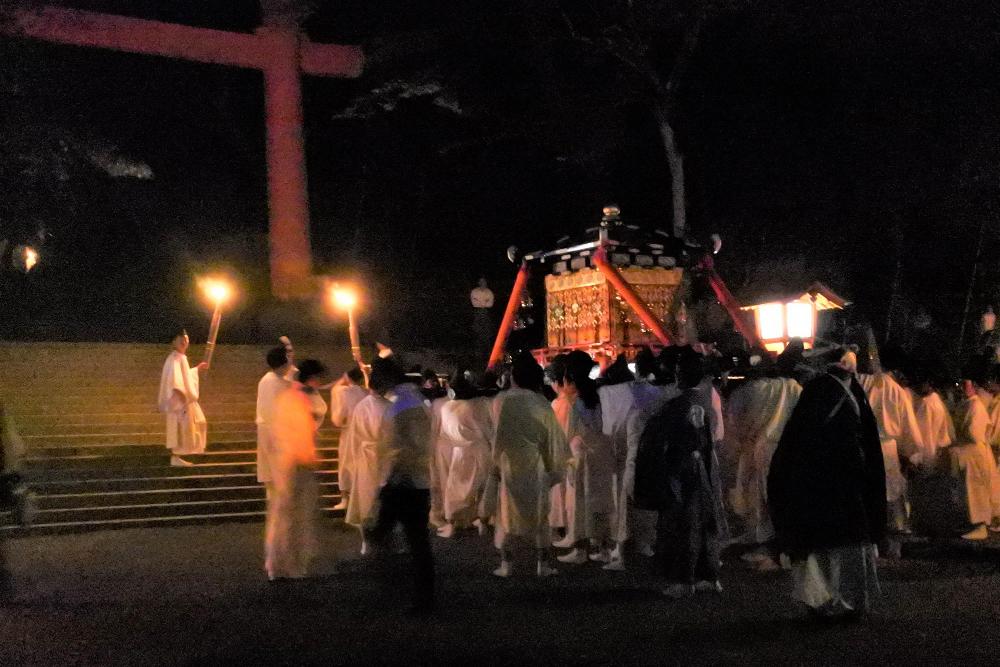
Senza no Gi relocation rite (2015)
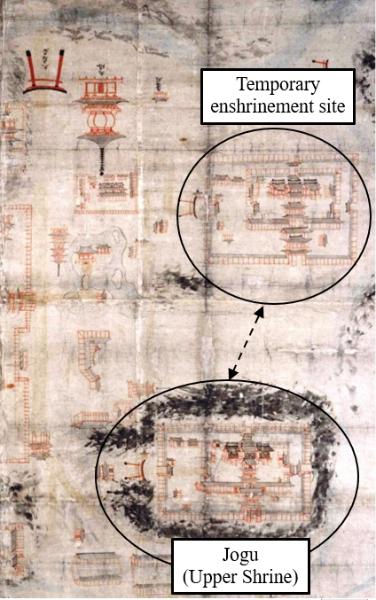
Jogu (Upper Shrine) and a temporary enshrinement site on an illustrated map
(early fifteenth century)
Special rituals are performed when repairing or reconstructing the main sanctuaries of Shinto shrines. These sacred structures are treated with the utmost respect, as they contain goshintai, treasures in which deities are believed to “reside” or manifest. When sanctuaries undergo repairs, the goshintai are ceremonially transferred to temporary enshrinement sites that have been prepared in advance. This is done because the deities must not be disturbed by the loud sounds of construction and because it is inappropriate to stand on the roof above them.
At Usa Jingu Shrine, the grandest transfer ritual is held when all three deities of the three main sanctuaries at the Jogu (Upper Shrine) are returned after repairs have been completed. It is called Honden Senzasai (“ritual to return the deities to the main sanctuaries”) and is attended by a chokushi (imperial messenger). Portable shrines carrying the goshintai leave the temporary place of enshrinement in the dead of night, traveling back to the Jogu by torchlight for the ritual of transfer. The next day, the chokushi presents offerings to the deities and reads aloud a prayer and an address from the emperor.
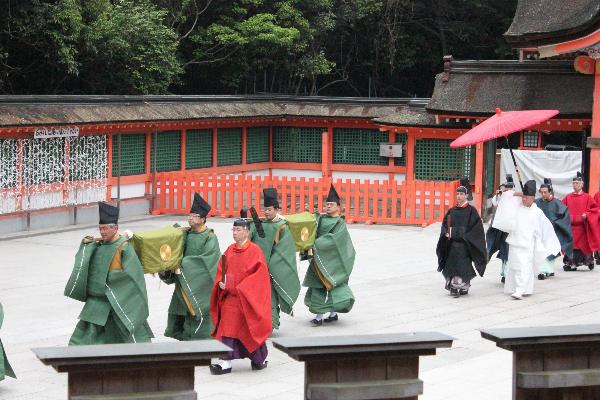
The chokushi procession heading to the main sanctuary
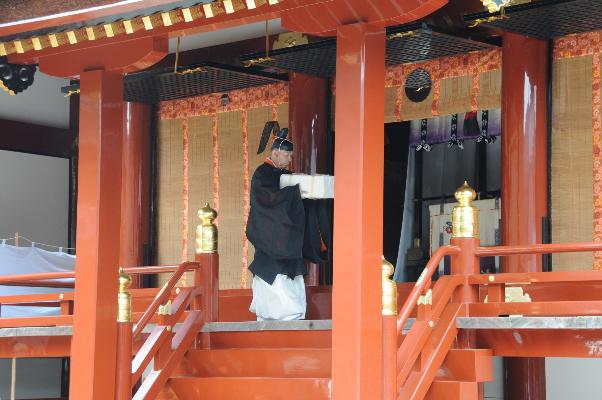
The head priest presenting offerings to the deities
The Honden Senzasai is now a rare sight, only taking place when the main sanctuaries require repairs on a scale large enough to transfer all the enshrined deities. However, it was held much more frequently when Usa Jingu practiced ritual reconstruction of shrine buildings at set intervals. Large shrines once routinely rebuilt the structures on their grounds despite the great cost in order to maintain a “pure” and ever-new appearance that represented the shrine’s sacred nature. The regular rebuilding also allowed artisans specializing in shrine architecture to hone their skills and pass them on to the next generation.
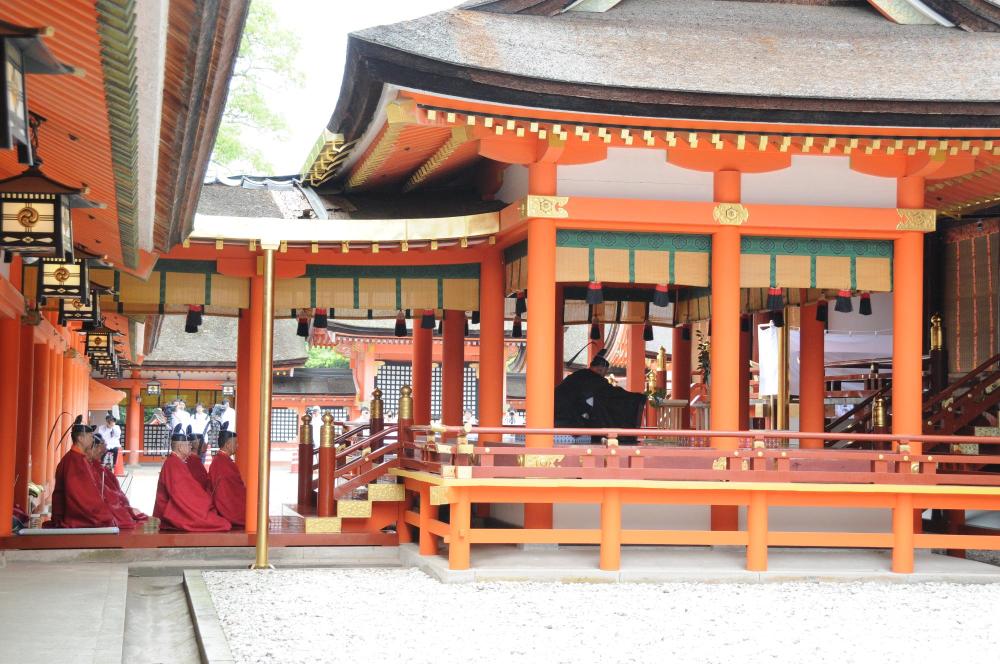
Hobei no Gi offering rite (2015)
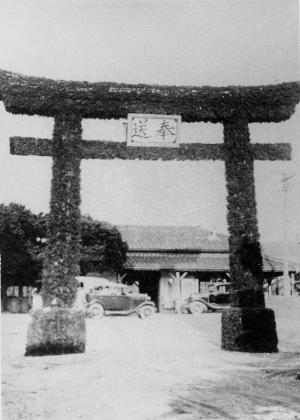
A torii gate decorated for the Honden Senzasai (1941)
Today only Ise Jingu Grand Shrine in Mie Prefecture undertakes complete ritual reconstruction of all of its main shrine buildings, which takes place every 20 years. At Usa Jingu, reconstruction occurred every 33 years between the ninth and the fourteenth centuries. As the power of the shrine waned and the country entered a tumultuous period of civil war, the costly cycle had to be discontinued, and since then repairs have only been carried out when needed.
The most recent Honden Senzasai was held in 2015.

This English-language text was created by Japan Tourism Agency.







更新日:2024年03月18日